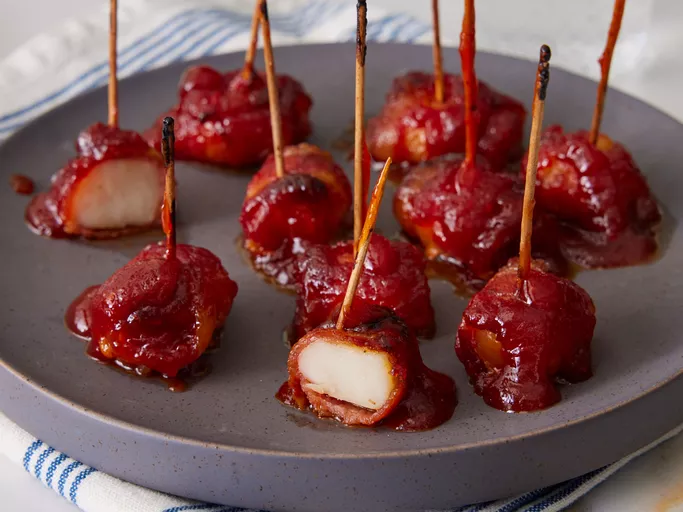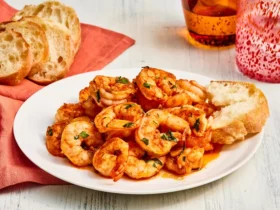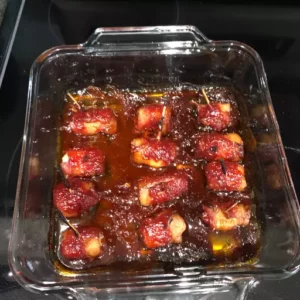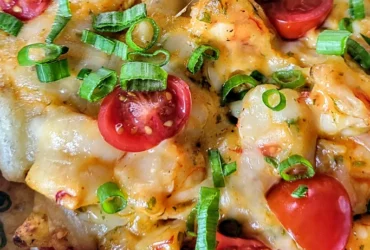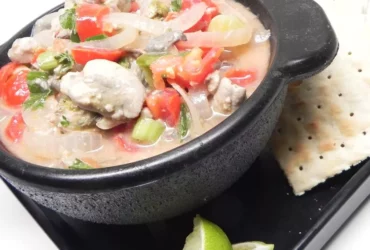Ingredients
Select fresh water chestnuts with a firm texture and no signs of mold or rot
When it comes to selecting the right ingredients for this Bacon-Wrapped Water Chestnuts Recipe, the choice of fresh water chestnuts is crucial.
Fresh water chestnuts are typically available in most Asian markets or well-stocked supermarkets, especially during the spring and summer months when they’re in season.
To ensure you get the best results with your bacon-wrapped water chestnuts, it’s essential to select water chestnuts that have a firm texture and no signs of mold or rot.
Firm water chestnuts are ideal because they will hold their shape well during cooking and won’t become mushy or unappetizing.
On the other hand, water chestnuts with soft spots or those that feel squishy to the touch should be avoided as they may have begun to spoil.
When selecting fresh water chestnuts, look for ones with a shiny, smooth skin and a firm texture. They should also be heavy for their size, indicating that they’re full of juice and nutrients.
Avoid choosing water chestnuts that have visible signs of mold or rot, as these can quickly spread to other areas and ruin the entire batch.
Some common signs of mold or rot on water chestnuts include a soft, slimy texture, dark spots or discoloration, and an unpleasant odor.
By carefully selecting fresh water chestnuts with a firm texture and no signs of mold or rot, you’ll be able to enjoy the best flavor and texture in your Bacon-Wrapped Water Chestnuts Recipe.
Cut bacon strips into smaller pieces, about 1 inch long
Cut Bacon strips into smaller pieces, about 1 inch long. This will help to ensure even cooking and prevent any large, tough strips from overpowering the delicate flavor of the water chestnuts.
To do this, start by holding a strip of bacon horizontally across your cutting board.
Position the cutting board at an angle so that you can make clean cuts through the width of the bacon without it slipping out of control.
Carefully place the tip of your knife into one end of the bacon strip and press down gently to start making a cut through the meat.
Maintain a steady pressure while slicing through the entire strip, using long, smooth strokes to minimize sawing motions that can cause uneven cuts.
Continue cutting each
Bacon strip into 1-inch pieces until you have the desired amount for your recipe.
Once cut, these smaller bits of bacon are ready to be wrapped around water chestnuts and baked to a crispy perfection in the oven!
Instructions
Preheat oven to 400°F (200°C), as recommended by the USDA for even cooking
To begin preparing the delicious Bacon-Wrapped Water Chestnuts recipe, it’s essential to preheat the oven as recommended by the USDA for even cooking. The standard temperature for cooking in most ovens is 400°F (200°C), which is a crucial factor in ensuring that your water chestnuts cook uniformly and achieve the perfect balance of crispy texture on the outside and tender interior.
The reason why preheating to 400°F is recommended by the USDA lies in the physical properties of heat distribution within an oven. At this temperature, the hot air inside the oven circulates efficiently, allowing for a consistent transfer of heat energy throughout the cooking space. This ensures that your bacon-wrapped water chestnuts cook evenly, without any cold spots or undercooked areas.
When preheating to 400°F (200°C), it’s also essential to consider the time required for the oven to reach this temperature. A general guideline is to allow the oven at least 10-15 minutes to preheat before cooking. However, some ovens may take longer or shorter periods depending on their specific design and capacity.
It’s worth noting that preheating to a higher temperature than recommended by the USDA can lead to uneven cooking and potentially even food safety issues. Water chestnuts cooked at too high temperatures may become overcooked on the outside, while remaining undercooked on the inside.
In summary, to achieve perfectly cooked bacon-wrapped water chestnuts according to the USDA’s guidelines, it is crucial to preheat your oven to 400°F (200°C). By following these temperature recommendations and allowing sufficient time for preheating, you can ensure that your dish turns out deliciously tender and crispy on the outside.
As a final tip, make sure to check the internal temperature of your cooked water chestnuts using a food thermometer. The recommended internal temperature for fully cooked water chestnuts is at least 165°F (74°C), which ensures that they are safe to consume and have been thoroughly cooked throughout.
Rinse water chestnuts under cold running water and pat them dry with a paper towel, according to Cornell University’s guidelines for food preparation
To ensure that the water chestnuts are properly prepared for cooking, it is essential to follow a specific process as recommended by Cornell University’s guidelines for food preparation.
The first step involves rinsing the water chestnuts under cold running water to remove any dirt or debris that may be present on their surface. This is crucial in order to prevent any potential contaminants from affecting the flavor and texture of the final dish.
Once the water chestnuts have been rinsed, it is necessary to pat them dry with a paper towel. This step helps to remove excess moisture from the surface of the water chestnuts, which can aid in the even cooking process and prevent them from becoming too soggy or soft during preparation.
The use of cold running water for rinsing also helps to minimize any potential damage to the delicate texture of the water chestnuts. If warm or hot water were used instead, it could cause the starches on the surface of the water chestnuts to break down more quickly, leading to a less desirable texture in the finished dish.
By following these simple steps and using cold running water to rinse and pat dry the water chestnuts, you can ensure that your bacon-wrapped water chestnuts recipe turns out with the perfect combination of flavor and texture.
Tips and Variations
Consider adding garlic powder or dried herbs like thyme or rosemary to the bacon mixture for extra flavor
To take the flavors in this recipe to a whole new level, consider adding some aromatic and savory elements to the bacon mixture.
One option is to sprinkle some garlic powder over the crumbled bacon before wrapping it around the water chestnuts. This will infuse the bacon with a pungent, slightly sweet flavor that complements the crunchy texture of the water chestnuts perfectly.
Alternatively, you can also add some dried herbs like thyme or rosemary to the bacon mixture for an added depth of flavor. Thyme has a slightly minty and earthy flavor that pairs well with the smoky sweetness of the bacon, while rosemary adds a piney and herbaceous note that’s perfect for those who love a robust flavor.
Another option is to mix some minced onion or shallot into the bacon mixture for an added burst of flavor. The sweetness of the onions will caramelize beautifully when cooked with the bacon, creating a rich and savory glaze over the water chestnuts.
You can also experiment with different types of cheese, such as cheddar or parmesan, to add a tangy and creamy element to the recipe. Simply sprinkle the grated cheese over the bacon mixture before wrapping it around the water chestnuts for an extra burst of flavor.
For a spicy kick, you can add some red pepper flakes or diced jalapenos to the bacon mixture. This will give the dish a bold and smoky flavor that’s perfect for those who love a little heat in their meals.
Finally, don’t be afraid to get creative with your ingredients and experiment with different combinations of flavors and herbs. The key is to balance out the flavors so that they complement each other perfectly, creating a dish that’s both flavorful and visually appealing.
Variations
- Add some diced bell peppers or mushrooms to the bacon mixture for added texture and flavor.
- Use different types of cheese, such as goat cheese or feta, for a tangy and creamy element.
- Experiment with different herbs and spices, such as paprika or cumin, to add a smoky or earthy flavor.
- Add some chopped fresh herbs, such as parsley or cilantro, for a bright and refreshing flavor.
In summary, the key to making this recipe truly exceptional is to experiment with different flavors and ingredients. By adding aromatic and savory elements like garlic powder, thyme, and rosemary, you can take the dish to a whole new level of flavor and depth.
For a spicy twist, sprinkle some red pepper flakes on top of the water chestnuts before baking
To give this classic recipe a spicy kick, add some heat with red pepper flakes sprinkled on top of the water chestnuts before baking.
Here are some tips to elevate your bacon-wrapped water chestnuts:
Add Different Types of Meats
- Cooked sausage or chorizo for a savory, slightly spicy flavor
- Turkey bacon or prosciutto for a leaner alternative
- Ham slices for a sweet and salty combination
Spice it Up with Herbs
- Rosemary leaves for an earthy, herbaceous flavor
- Thyme sprigs for a slightly minty taste
- Cilantro for a fresh and citrusy zing
Experiment with Sauces
- Honey mustard sauce for a sweet and tangy glaze
- Soy sauce or tamari for a savory, umami flavor
- Olive oil and garlic for a rich and aromatic taste
Try Different Baking Times
- For crisper bacon, bake at 425°F (220°C) for 15-20 minutes
- For tender water chestnuts, bake at 350°F (175°C) for 30-40 minutes
Get Creative with Toppings
- Sliced green onions or chives for added flavor and color
- Crushed red pepper flakes for extra heat
- Lemon wedges for a bright and citrusy note
- Best Datanyze Alternatives for 2025 - April 24, 2025
- Best Hunter.io Alternatives for 2025 - April 22, 2025
- Best Lead411 Alternatives for 2025 - April 22, 2025

